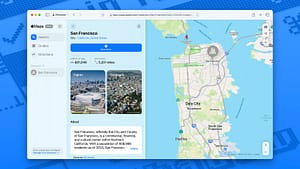Why ads are coming to your favorite AI bots and you’ve only got yourself to blame

Most consumers don't want to pay to chat with a chatbot, according to a recent poll by Bloomberg Intelligence. That means advertising -- rather than subscription-based services -- will be the route to monetizing large language models.
"The propensity to pay for generative-AI tools remains low," writes the author, Mandeep Singh, Bloomberg Intelligence senior industry analyst, with the help of Damian Reimertz, contributing analyst, in the report, "Generative AI's trillion-dollar disruption."
"About 25% of the users who use gen AI have paid subscriptions and are willing to shell out up to $20 for a monthly subscription for features including search, copilots, image and video generation," writes Singh.
Also: Only 8% of Americans would pay extra for AI, according to ZDNET-Aberdeen research
The Bloomberg Intelligence survey, conducted in the first week of May, asked 1,000 respondents in the US, Europe, and, to a small extent, Asia, a series of 20 questions about the use of chatbots.
Respondents were stratified primarily by age and income. Among the respondents, 49% were 18 to 34 years old, 20% were 35 to 44 years old, another 20% were 45 to 54, and the remaining were older than 54. In terms of income, 47% reported an income of over $50,000 annually.
Disparity between LLMs and keyword searches
In an interview, Singh expanded on the report's findings. When it comes to subscriptions, it's really all about OpenAI, he said, given that Perplexity and others are looking to either advertising or corporate seat licenses akin to a more traditional software sale.
The numbers already show a stark disparity between LLMs and keyword searches, among the biggest traditional free products on the Internet.
OpenAI has more than 600 million weekly active users for its various bots, noted Singh. And OpenAI is "probably, currently, the leader in terms of number of paying Gen AI subscribers," said Singh, "way ahead of" every other bot offering including Google's Gemini, Microsoft's Copilot, and Anthropic's Claude.
(Disclosure: Ziff Davis, ZDNET's parent company, filed an April 2025 lawsuit against OpenAI, alleging it infringed Ziff Davis copyrights in training and operating its AI systems.)
And yet, by his estimate, the company has fewer than 20 million users subscribing to paid plans.
OpenAI subscriptions range from the $20 Plus monthly subscription to a $25 Teams account to $200 a month for the Pro research that lets GPT perform complex research queries.
"We're talking about a low-single-digit rate of adoption for the pay tier," said Singh. "The $200 tier would be less than 0.1% of their 600 million weekly active users," by his estimate.
Google's edge
By contrast, Google has more than 4 billion users for its core search product, which gets 25 billion searches a day, said Singh. Google makes $51 billion every quarter from search. If one adds the revenue from advertisements on YouTube and from Google's third-party network of web ads, the total is $77 billion.
The challenge for OpenAI, Anthropic, Perplexity, and others is that use cases overlap between search and bots.
Of those surveyed, 22% said they found OpenAI's bots "most effective" for finding information online. But 27% found Google's normal search most effective, and 11% preferred Google's Gemini, for a combined preference of 38% of respondents -- and that's not counting the large number of people who might use Google's YouTube video property as a way to search.
Others were way down in preference, including Meta Platforms's Meta AI, which had just an 8% preference share, he said.
Despite the dominance of free search, it's hard for OpenAI to get away from the appeal of subscriptions, Singh noted. That's because "the AI infrastructure that is powering ChatGPT is a lot more expensive than the compute infrastructure that's powering Google Ads," he said.
While paid search has been around for nearly 30 years, and can be served (along with the accompanying ads) on commodity server computers, developing LLMs requires the most expensive data center infrastructure in the world, machines that are crammed with tens or even hundreds of thousands of Nvidia's top-of-the-line GPU chips.
Advertising infrastructure
The cost difference makes it economical for Google to monetize free search via ads.
OpenAI faces a difficult situation, he said. If it were to add advertising, it would incur extra overhead for the advertising infrastructure required. OpenAI is expected to spend "more than $200 billion through 2030" on AI infrastructure, according to The Information.
"OpenAI doesn't have the option of rolling out ads because then they would be burning even more cash," he said. "And, right now, they are obviously unprofitable even though they're growing very fast."
"AI infrastructure is so expensive that an ad-based business model is not the best model to monetize user engagement," he said.
Despite those economics, OpenAI is already pivoting to ads, said Singh, and he expects the company to move more and more in that direction. Given the user growth and engagement growth, "it's a no-brainer," he offered.
He said that having hundreds of millions of users who don't pay for stuff means even the added cost of serving ads might be a less-bad option for OpenAI.
"What OpenAI is realizing is, given their scale now, having just free users is not helping their cash flow position. And so that's where ads will help monetize the freemium users at least somewhat better than just having them use the platform for free."
Also: 6 new ways ChatGPT Projects supercharges your AI chats - how to try it
OpenAI recently hired Fidji Simo, previously CEO of delivery business Instacart, to run its applications business, including building an advertising business, said Singh. At Instacart, Simo was credited with building an advertising business that now brings in a $1 billion annually in ad revenue, he said.
As to when OpenAI will roll out an ad product broadly, he speculated, "it's a second-half [of 2025] launch, it's imminent given the user growth that they have had."
OpenAI has a lot of work to do, Singh noted, to build the kind of tracking metrics that advertisers require. Netflix, a latecomer to advertising, found it challenging to build the business. The streamer focused on brand advertising, versus targeted, direct-response advertising.
Every click now matters more
"The reason why Google and Meta have a much higher ad pricing statistic is because they show you direct response, targeted ads based on your interests, your browsing, and those monetize at a much better rate," he said.
"It's going to take them a while" to develop a competent ad stack for serving ads, and for targeting of users, said Singh.
At the same time that OpenAI seeks to compete in advertising, the AI effect is likely to benefit Google's search business. At its I/O conference two weeks ago, Google said it is rapidly spreading its AI-generated previews to all US search users in the form of what it refers to as AI Mode, where a summary from the bot replaces the traditional list of blue links.
The most immediate result of that, noted Singh, has been to reduce the click-through rate of the ads Google shows; however, it also drives up the average cost-per-click of ads for ad buyers.
In essence, AI is reducing click-throughs on the world's biggest online search platform, thereby making clicks more valuable in general. Every click that still happens becomes, in some sense, more meaningful from an advertiser's standpoint.
Also: Everything from Google I/O 2025 you might've missed
"The ad pricing growth may continue to go even higher because the people who are engaging with the AI overviews have already spent quite a bit of time on the search page," said Singh. "So, if they end up clicking a link, Google has had plenty of time to figure out what it is that they are most interested in, and they will show you the most relevant ad."
After OpenAI, among the most promising young hopefuls, Perplexity is "probably farthest along in terms of the consumer side" in developing a search-based business, said Singh. Next in line in terms of usage and potential, Anthropic "really is doubling down on the enterprise side with APIs and coding assistant, but their consumer offering so far hasn't had much traction," said Singh. Mistral probably trails Anthropic, by his estimate, and Meta only recently introduced a stand-alone AI app. "It will be interesting to see how it ramps" in terms of usage, he said of Meta AI.
Before you dismiss the subscription business, keep in mind that it's still early in the paid chatbot business. OpenAI only began charging for ChatGPT last November. The market is still experimenting with feature and pricing varieties. It is conceivable that OpenAI could set a lower entry point for its subscriptions than $20 to attract those on a budget.
Singh predicted that things would go the opposite way, with more capabilities being added to produce a more compelling offering at even higher prices.
Also: Sam Altman says the Singularity is imminent - here's why
For example, Google at I/O unveiled its AI Ultra plan for Gemini that comes with higher usage credits for the bot, newer releases of Gemini, 30 terabytes of online storage, and YouTube Premium, for $249 per month, discounted to $125 for the first three months. Several variations cost less with lower amounts of cloud storage.
"They really are offering you a very compelling bundle as a consumer," said Singh of the Ultra plan. He predicted OpenAI will find Google's Ultra hard to beat with the $200 ChatGPT plan, given OpenAI is only offering a bot versus a bundle.
"OpenAI may have a tough time ramping up that $200 subscription on a standalone basis when Google is offering you so much more for $249 a month," said Singh -- especially "if Gemini's performance is close to ChatGPT's."
Want more stories about AI? Sign up for Innovation, our weekly newsletter.








Post Comment